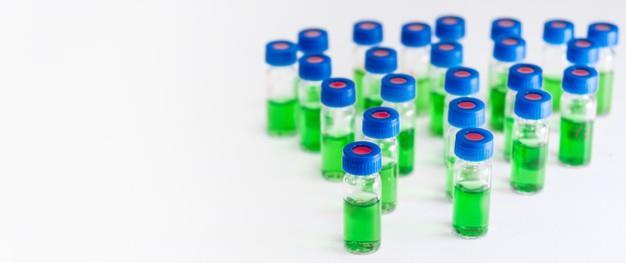
403
Sorry!!
Error! We're sorry, but the page you were looking for doesn't exist.
Phenol Formaldehyde Adhesives and Laminates Find Application in Paints and Bonding Solutions for Flooring, Ceiling and Wall Coverings, and Others
(MENAFN- Coherent Market Insights) Phenol formaldehyde resin is synthetic polymer formulation used in the manufacture of high-pressure adhesives and laminates for a variety of applications. It is also utilized to manufacture a range of products, including friction stirrers, solvent transfer tapes, adhesives for paper, fiberboards, dry lubricants, sealants for adhesive labels, chemical and paper weights, epoxy resin types, polyethylene and thermoset resins. Phenol formaldehyde adhesives and laminates find application in wooden chipboard, construction, electrical equipment, decorative articles, and others.
Phenol formaldehyde is utilized in the manufacture of adhesives for wood products, varnish, rubber and plastic products, varnish and epoxy resins, drywall, paint, and varnish mantles. It is also utilized as an additive in a number of paints and bonding solutions for flooring, ceiling and wall coverings, marine & automotive paints, sealants, glue, and adhesives for furniture. Phenol formaldehyde adhesives and laminates form a part of a broad category of materials used in industrial processes, such as thermal insulation, automotive seals, soundproofing, and bonding.
Phenol Formaldehyde resin is commonly used in the manufacture of thin wall and plywood materials, as well as bonding acrylics and polyurethane foams. They are used to strengthen the bond between various materials and to give them sufficient strength for aesthetic and functional purposes. Although a common ingredient in building materials, there are a number of health hazards associated with the use of phenol formaldehyde resins. The most immediate hazard associated with the substance is its volatile nature, which can result in serious skin reactions and respiratory issues if exposed to high concentrations. It is this potential health hazard that has prompted the U.S FDA to ban the use of phenol formaldehyde resins in certain products. To engender the safe application of adhesives, wood adhesives must contain low concentrations of volatile organic compounds. Formaldehyde exposure limits is 3 ppm (total weight average) in the U.S., 2 ppm (threshold limit value (TLV)) in the U.K., and 1 ppm (TLV) in Germany and Switzerland.
Phenol formaldehyde adhesives and laminates can help to protect wood from termites, help make the finishing surface of plywood and urethane easier to maintain and increase the life span of artificial wicker furniture. While the material does not have a low absorption rate like VOCs, they still contribute to a low airborne concentration. This means that although phenolic resin and urea formaldehyde resins may cause nose and throat irritation when inhaled, these irritations are mild and temporary.
Phenol formaldehyde is utilized in the manufacture of adhesives for wood products, varnish, rubber and plastic products, varnish and epoxy resins, drywall, paint, and varnish mantles. It is also utilized as an additive in a number of paints and bonding solutions for flooring, ceiling and wall coverings, marine & automotive paints, sealants, glue, and adhesives for furniture. Phenol formaldehyde adhesives and laminates form a part of a broad category of materials used in industrial processes, such as thermal insulation, automotive seals, soundproofing, and bonding.
Phenol Formaldehyde resin is commonly used in the manufacture of thin wall and plywood materials, as well as bonding acrylics and polyurethane foams. They are used to strengthen the bond between various materials and to give them sufficient strength for aesthetic and functional purposes. Although a common ingredient in building materials, there are a number of health hazards associated with the use of phenol formaldehyde resins. The most immediate hazard associated with the substance is its volatile nature, which can result in serious skin reactions and respiratory issues if exposed to high concentrations. It is this potential health hazard that has prompted the U.S FDA to ban the use of phenol formaldehyde resins in certain products. To engender the safe application of adhesives, wood adhesives must contain low concentrations of volatile organic compounds. Formaldehyde exposure limits is 3 ppm (total weight average) in the U.S., 2 ppm (threshold limit value (TLV)) in the U.K., and 1 ppm (TLV) in Germany and Switzerland.
Phenol formaldehyde adhesives and laminates can help to protect wood from termites, help make the finishing surface of plywood and urethane easier to maintain and increase the life span of artificial wicker furniture. While the material does not have a low absorption rate like VOCs, they still contribute to a low airborne concentration. This means that although phenolic resin and urea formaldehyde resins may cause nose and throat irritation when inhaled, these irritations are mild and temporary.

Legal Disclaimer:
MENAFN provides the
information “as is” without warranty of any kind. We do not accept
any responsibility or liability for the accuracy, content, images,
videos, licenses, completeness, legality, or reliability of the information
contained in this article. If you have any complaints or copyright
issues related to this article, kindly contact the provider above.

















Comments
No comment